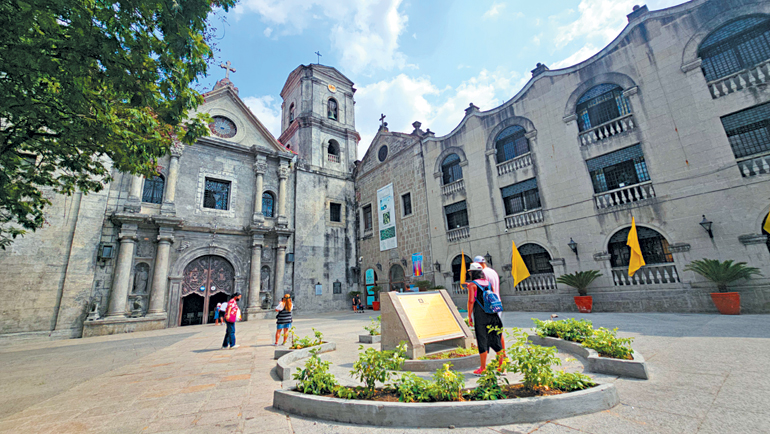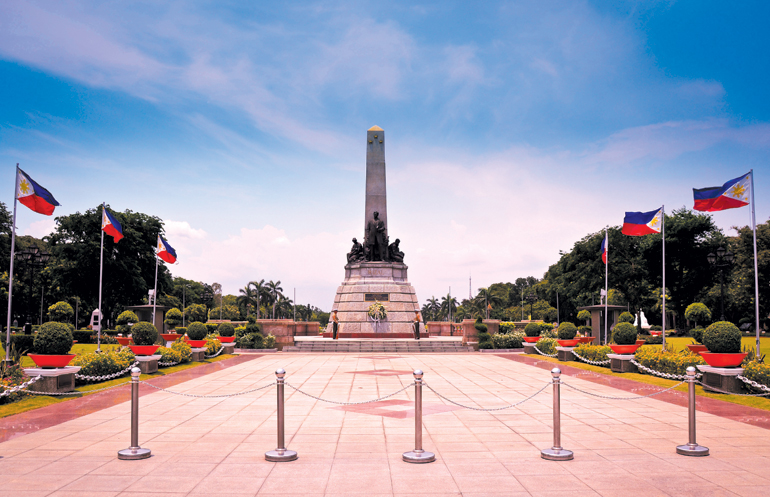Rediscovering Manila City by walking through its districts and landmarks

As more and more Filipinos from outside the National Capitol Region come into Metro Manila to enjoy the nightlife of Bonifacio Global City, shop in the grandness of malls in the south, or take pictures in the aesthetics of destinations in the north, the City of Manila is often perceived by many Filipinos as solely the government’s seat of power.
Old and rich in history, the “Pearl of the Orient” is the cultural core of Filipino heritage having witnessed some of the most important events in the country’s history. Chiseled in the walls of Manila’s archaic infrastructures is the story of every Filipino, laid bare for every tourist to see, local or international, as they tour the city.
On the walls of Intramuros
When Spain conquered Manila in 1571, they rebuilt the wooden forts that used to protect an Islamic Tagalog society with stone and built a secondary stone wall to further defend the settlement inside in what is now a United Nations Educational, Scientific and Cultural Organization (UNESCO) world heritage site — the walled city of Intramuros.
For more than 300 years, Intramuros was at the core of Manila City and was the center of power for the Spaniards in the region. While the walled city suffered greatly during World War II, restoration efforts by the government during the 1980s reconstructed the fort to its former majestic self. Today, tourists from all over the world gather in the medieval city to experience Spanish-era Manila through the Intramuros’ churches, restaurants, and museums.
Several tours by different agencies are offered to give visitors a preview of the walled city’s historical landmarks whether by walking, cycling, or by coach. Tours in the city after dark have even grown in popularity in recent years as grim and scary stories are told along the many dungeons and spooky areas of Intramuros.
Food trip in Binondo
A few years after the Spanish occupation of Manila, Chinese-Catholic immigrants and merchants established a permanent settlement across the Pasig River in 1594. Now the oldest Chinatown in the world, the district of Binondo was founded by Chinese traders who were attracted by the prospects of a better life in the prospering city of Manila.
From the elegance of the Jones Bridge to the vibrant New Binondo Chinatown Arch that welcomes you to the district, Binondo is the embodiment of Chinese-Filipino culture that has stood the test of time. The district is currently known for its authentic Chinese cuisine, neoclassical establishments, and the Minor Basilica and National Shrine of San Lorenzo Ruiz or Binondo Church where the first Filipino saint, St. Lorenzo Ruiz, was an altar server.
Touring this district requires not only the energy to walk for hours but also the stomach to try its famous dishes and the patience to wait in long lines. Various social media posts about food in Binondo have gone viral, however, some agencies give tourists the chance to go on a walking tour in the district, visit its famous landmarks, and eat at its renowned food establishments like Cafe Mezzanine and Eng Bee Tin.
Strolling in Rizal Park

In 1897, right before the Spanish were forced out of the country, Jose P. Rizal, our national hero whose work became a powerful tool against Spanish colonialism and inspired a generation of revolutionaries, was executed by a firing squad for rebellion in what was then known as “Bagumbayan.”
As a tribute to the heroism of Rizal, a monument in his honor was built at the site of his execution with his “Mi Ultimo Adios” inscribed on a black granite wall. The area, now known as Rizal Park or Luneta, is one of the few remaining patches of green in the heart of Manila. The park covers about 60 hectares of open lawns, ornamental gardens, paved walks, and wooded areas with carriages bringing tourists around the monument.
Rizal Park can be toured by anyone and everyone. While most parks are just leisure spots where families can bond, Luneta provides the perfect mix of relaxation and education on Philippine history. Several sights can be witnessed in the park including a daily flag ceremony, Knights of Rizal guarding his monument, and various other historical markers related to Rizal.
Learning about the Philippines and its wildlife
Aside from these historical landmarks and districts in Manila, there are other spots within the city where tourists and visitors can visit modern sites and attractions, depending on their liking.
For visitors looking for more facts and insights on their trip to Manila, the city is home to three National Museums with different specializations: the National Museum of Fine Arts, the National Museum of Anthropology, and the National Museum of Natural History. Each of these museums is unique in their own way in their presentation of artifacts from all over the country. The best part about these museums is that they are close to each other and can easily be toured within a day.
Meanwhile, tourists looking for Filipino wildlife in the metropolis can visit two areas open daily within the city to satisfy their eyes’ craving. On one hand, the Manila Zoo is home to various land animals ranging from reptiles to birds including the Philippine Eagle. On the other hand, the Manila Ocean Park offers a variety of sea creatures that one can see, and even has shows where they showcase the skills animals can learn.
As the city celebrates its day, to rediscover its roots is to embark on a journey through its historic streets and landmarks. Walking tours and visits to iconic locations not only honor Manila’s rich legacy but also highlight the enduring spirit and resilience of its people, making every step a tribute to a city that is Filipino in every single way. — Jomarc Angelo M. Corpuz



